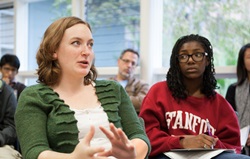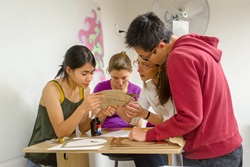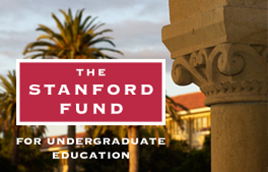You are here

The renowned St. Lawrence String Quartet performed in a dorm for freshmen participating in ITALIC, one of two new residential humanities programs supported by The Stanford Fund.
Bringing Humanities Home
Two new academic programs enhance the Stanford experience
Katrina Kent made a surprising choice for her freshman year at Stanford.
Although she's eyeing a career in scientific research, and her course load is heavy on neurobiology and computer science, Katrina chose to live in a dorm where she would be surrounded by the arts. Day and night, she and about 40 other students came together to explore a wide range of visual and performing arts—everything from classical opera and ballet to experimental music and theater.

"Before I signed up, I thought, I'm going to be taking a lot of science classes—I won't have time for all of this," says Katrina. "But I decided to take a risk and go for it."
Katrina was part of a new yearlong program called Immersion in the Arts: Living in Culture, known as ITALIC. A parallel residential program called Science in the Making: An Integrated Learning Environment—or SIMILE—focuses on the history of science. Crucial seed funding for both residential experiences came from The Stanford Fund.
In both programs, first-year students take classes, attend guest lectures, and share lunchtime conversations with professors—all at their dorm, all while earning credit toward undergraduate requirements. Each course also includes field trips to local museums and other venues.
"It was really fantastic," says Alec Glassford, who participated in SIMILE during his freshman year and became involved in theater on campus.

"Even though biology wasn't my favorite course in high school, I've always thought the stories of different scientists and their discoveries were fascinating and heroic." Because of what he experienced in SIMILE, he says, he is interested in devoting more of his education to history.
Katrina has studied violin since she was about 4 years old, but she says ITALIC introduced her to new art forms and deepened her appreciation for others.
"I still identify as a scientist first," she says. "But now I have much more of a framework to look at different kinds of art and understand them better."
